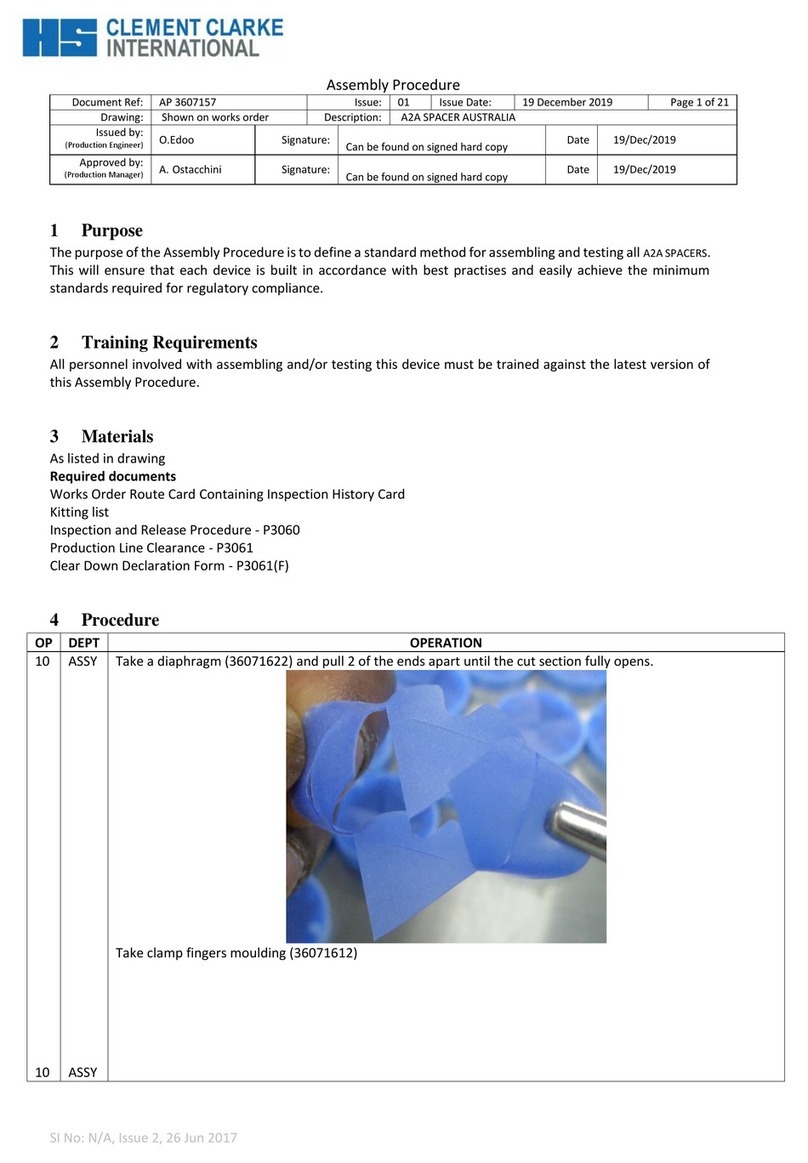
“NOTE”-
Note indicates points of particular or
additional information.
« REMARQUE » : Remarque indique des points
d’intérêt particulier ou des renseignements
additionnels.
la note indique des remarques
d’information particulière ou supplémentaire.
1.3. Should your product not perform properly, or if
you have any questions concerning the use and care
of any Reliance® product, contact the Reliance®
Distributor, where you purchased this product or contact
the Technical Service Department, Reliance® Medical
Products, Inc., 3535 Kings Mills Road, Mason, Ohio
45040-2303, or call (800) 735-0358.
NOTE:
Always have the model number and
serial number available before contacting
Reliance® or your Authorized Reliance®
Distributor.
REMARQUE : Ayez toujours le numéro de
modèle et le numéro de série à portée de la
main avant de contacter Reliance® ou votre
distributeur Reliance® autorisé.
“CLASSIFIED BY CANADIAN STANDARDS
ASSOCIATION® WITH RESPECT TO ELECTRIC
SHOCK, FIRE AND MECHANICAL HAZARDS
ONLY IN ACCORDANCE WITH UL 60601-1.”
According to Clause 5 in IEC 60601-1, sec 6.8.1, this
unit is classified by the following:
• The type of protection against electric shock:
EQUIPMENT energized from an external electrical
power source: CLASS I EQUIPMENT
• The degree of protection against electric shock:
TYPE B EQUIPMENT
• The degree of protection against harmful ingress of
water: ORDINARY DEGREE
• The degree of safety of application in the presence
of a FLAMMABLE ANAESTHETIC MIXTURE WITH AIR
or WITH OXYGEN OR NITROUS OXIDE: EQUIPMENT
not suitable for use in the presence of a FLAMMABLE
ANAESTHETIC MIXTURE WITH AIR or WITH OXYGEN
OR NITROUS OXIDE
• The mode of operation: CONTINUOUS OPERATION
1. INTRODUCTION
1.1. This manual contains information applicable only
to the Reliance® Model 6200 Chair.
1.2. Whenever you see the symbols shown below,
heed their instructions! Always follow safe operating
and maintenance practices.
“DANGER”-
THE DANGER SYMBOL
IDENTIFIES SPECIAL INSTRUCTIONS OR
PROCEDURES WHICH, IF NOT CORRECTLY
FOLLOWED, COULD RESULT IN LOSS OF
LIFE OR PERSONAL INJURY.
« DANGER » : LE SYMBOLE DANGER
IDENTIFIE DES INSTRUCTIONS OU
PROCÉDURES SPÉCIALES QUI, SI ELLES
NE SONT PAS SUIVIES CORRECTEMENT,
POURRAIENT CAUSER UNE PERTE DE VIE
OU UNE BLESSURE.
“WARNING”-
THE WARNING SYMBOL
IDENTIFIES SPECIAL INSTRUCTIONS
OR PROCEDURES WHICH, IF NOT
CORRECTLY FOLLOWED, COULD RESULT
IN PERSONAL INJURY.
« AVERTISSEMENT » : LE SYMBOLE
AVERTISSEMENT IDENTIFIE DES
INSTRUCTIONS OU PROCÉDURES SPÉCIALES
QUI, SI ELLES NE SONT PAS SUIVIES
CORRECTEMENT, POURRAIENT CAUSER
UNE BLESSURE.
“CAUTION”-
This caution symbol identifies
special instructions or procedures which,
if not strictly observed, could result in
damage to or destruction of equipment.
« PRÉCAUTION » : Ce symbole de
précaution identifie des instructions ou
procédures spéciales qui, si elles ne sont pas
strictement suivies, pourraient causer un
dommage ou la destruction de l’équipement.
IN-6200 5





























